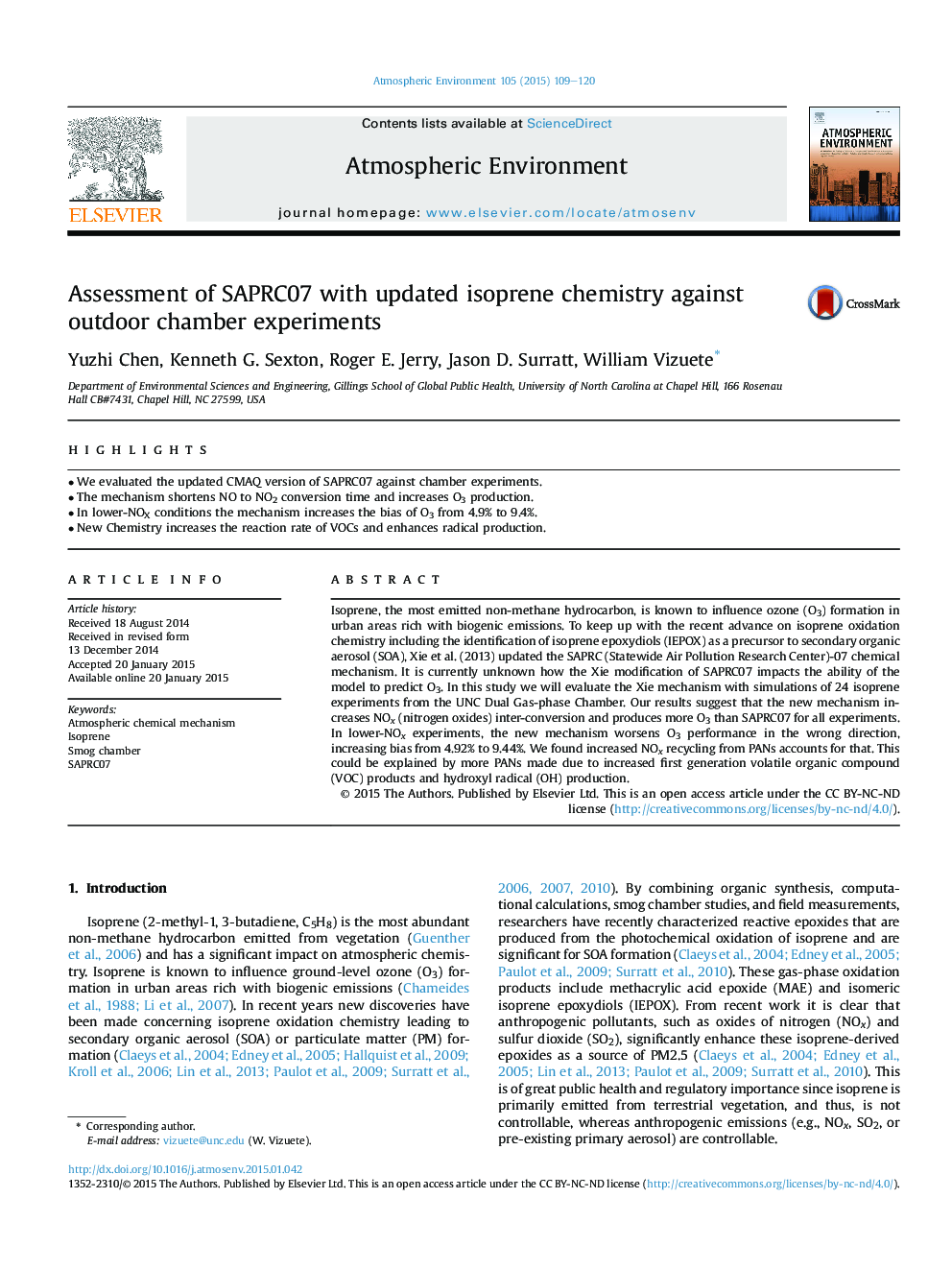| Article ID | Journal | Published Year | Pages | File Type |
|---|---|---|---|---|
| 6338674 | Atmospheric Environment | 2015 | 12 Pages |
Abstract
Isoprene, the most emitted non-methane hydrocarbon, is known to influence ozone (O3) formation in urban areas rich with biogenic emissions. To keep up with the recent advance on isoprene oxidation chemistry including the identification of isoprene epoxydiols (IEPOX) as a precursor to secondary organic aerosol (SOA), Xie et al. (2013) updated the SAPRC (Statewide Air Pollution Research Center)-07 chemical mechanism. It is currently unknown how the Xie modification of SAPRC07 impacts the ability of the model to predict O3. In this study we will evaluate the Xie mechanism with simulations of 24 isoprene experiments from the UNC Dual Gas-phase Chamber. Our results suggest that the new mechanism increases NOx (nitrogen oxides) inter-conversion and produces more O3 than SAPRC07 for all experiments. In lower-NOx experiments, the new mechanism worsens O3 performance in the wrong direction, increasing bias from 4.92% to 9.44%. We found increased NOx recycling from PANs accounts for that. This could be explained by more PANs made due to increased first generation volatile organic compound (VOC) products and hydroxyl radical (OH) production.
Keywords
Related Topics
Physical Sciences and Engineering
Earth and Planetary Sciences
Atmospheric Science
Authors
Yuzhi Chen, Kenneth G. Sexton, Roger E. Jerry, Jason D. Surratt, William Vizuete,
